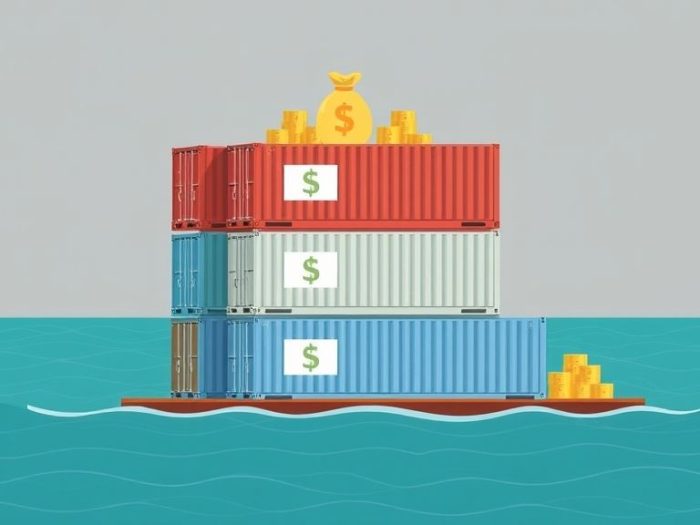Investing in shipping containers offers a unique way to participate in global trade and
potentially generate steady income. While it’s a niche investment, it can provide diversification
and attractive returns. This article explores the concept of shipping container investments and
the factors to consider before getting involved.
Understanding Shipping Container Investments
Shipping containers are standardized, reusable steel boxes used for transporting goods by sea,
rail, and truck. Investing in them typically involves:
- Purchasing Containers: Buying new or used shipping containers.
- Leasing: Leasing the containers to shipping companies, logistics providers, or other businesses.
How Shipping Container Investments Generate Income
- Lease Payments: You earn income from the lease payments made by the renters.
- Appreciation (Potentially): While not the primary focus, container values can appreciate slightly over time.
Benefits of Shipping Container Investments
- Passive Income: Lease payments provide a relatively passive income stream.
- Diversification: Containers are an asset class uncorrelated with traditional investments.
- Demand: The demand for containers is driven by global trade, which tends to grow over the long term.
- Tangible Asset: You own a physical asset.
Types of Shipping Container Investments
1. Direct Ownership and Management
You purchase containers and handle all aspects of leasing, maintenance, and logistics yourself.
-
Pros:
- Potential for higher returns.
- Full control.
-
Cons:
- Most time-consuming.
- Requires industry knowledge and logistics expertise.
2. Container Leasing Companies
Invest in publicly traded companies that own and lease shipping containers.
-
Pros:
- Passive investment through the stock market.
- Relatively liquid.
-
Cons:
- Returns tied to the company’s performance.
3. Container Investment Platforms
Some platforms offer fractional ownership of containers or managed container investment
programs.
-
Pros:
- Easier entry point than direct ownership.
-
Cons:
- Fees and platform risks.
- Varying levels of transparency.
Factors to Consider Before Investing
- Container Types: Different sizes and types of containers (dry van, refrigerated).
- Condition: New vs. used containers.
- Location: Where the containers are located and where they are leased.
- Lease Terms: Length of leases and rental rates.
- Maintenance and Repairs: Costs associated with maintaining the containers.
- Logistics: Costs and complexities of container movement and management.
- Depreciation: Containers depreciate over time.
Risks of Shipping Container Investments
- Economic Downturns: Reduced global trade can decrease demand for containers.
- Overcapacity: An oversupply of containers can lower lease rates.
- Damage and Loss: Containers can be damaged or lost during transit.
- Management Challenges: Direct ownership requires significant management effort.
- Platform Risks: Investment platforms may have financial or operational issues.
Conclusion
Shipping container investments offer a unique opportunity to participate in global trade and
generate income. However, they also involve specific risks and require careful consideration.
Thorough research and a clear understanding of the logistics and market dynamics are essential
for success.
Related Keywords
Shipping container investment, invest in shipping containers, container leasing, passive income,
alternative investments, shipping industry, global trade, logistics investment, container
returns, container investment platforms.
Frequently Asked Questions (FAQ)
1. What are shipping containers?
Shipping containers are standardized, reusable steel boxes used for transporting
goods by sea, rail, and truck.
2. How do shipping container investments generate income?
Income is generated primarily through lease payments from shipping companies,
logistics providers, or other businesses.
3. What are the benefits of investing in shipping containers?
Benefits include passive income, diversification, demand driven by global trade,
and ownership of a tangible asset.
4. What are the different ways to invest in shipping containers?
You can invest through direct ownership and management, container leasing
companies, or container investment platforms.
5. What is involved in direct ownership and management?
Direct ownership involves purchasing containers and handling all aspects of
leasing, maintenance, and logistics yourself.
6. How do container leasing companies operate?
Container leasing companies own and lease containers to shipping companies and
other businesses.
7. What are container investment platforms?
Container investment platforms offer fractional ownership of containers or
managed container investment programs.
8. What factors should I consider before investing in shipping containers?
Consider container types, condition, location, lease terms, maintenance costs,
logistics, and depreciation.
9. What are the risks of investing in shipping containers?
Risks include economic downturns, overcapacity, damage and loss, management
challenges, and platform risks.
10. Is investing in shipping containers a good fit for all investors?
It can be a good fit for investors seeking passive income and diversification,
but it requires careful research and an understanding of the associated risks.



